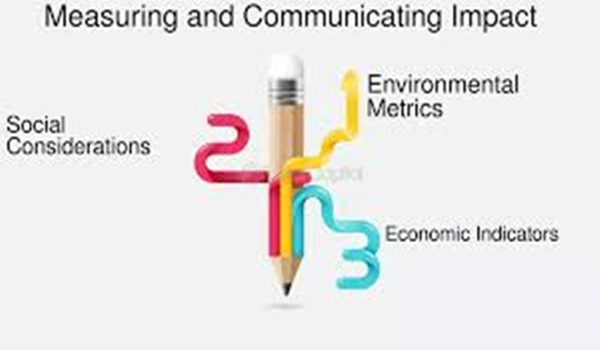In this article, we discussed the meaning of measuring and communicating product impact, features, the important, furthermore we talked about the ways to measure the impact
Definition
“Measuring and communicating product impact” means to assess the positive or negative effects a product has on its target audience, users, or the market, and then clearly conveying those findings to relevant stakeholders, including customers, investors, and internal teams, using data and metrics to determine the product’s value and influence.
Features of measuring product impact:
Goal setting:
Identifying specific business and customer impact goals that align with product strategy.
Establishing clear success criteria for measuring progress towards these goals.
Metric selection:
Choosing relevant metrics based on product type and goals (e.g., revenue, customer acquisition, engagement, satisfaction, conversion rates, churn rate).
Considering both quantitative (numerical) and qualitative (feedback) data sources.
Data collection methods:
Utilizing analytics tools to track user behavior and product usage data.
Conducting surveys and feedback mechanisms to gather customer insights.
Integrating data from different systems to create a comprehensive view.
Data analysis:
Analyzing trends and patterns within the collected data
Performing statistical tests to identify significant differences and correlations
Calculating key performance indicators (KPIs) to assess product performance against goals
Data visualization:
Employing charts, graphs, and dashboards to present complex data in an understandable format
Using visual aids to highlight key insights and trends
Communication strategy:
Tailoring communication to different audiences (e.g., executive team, product team, marketing team)
Regularly reporting product impact findings to key stakeholders
Proactively identifying areas for improvement based on data analysis
Important considerations:
Attribution: Understanding how different product features and marketing efforts contribute to the overall impact.
Benchmarking: Comparing product performance against industry standards and competitors
Ethical data practices: Ensuring data privacy and responsible collection and usage of customer information
The important of Measuring and Communicating Product Impact
Data-driven decision making:
By analyzing product impact metrics, companies can identify strengths and weaknesses, allowing them to prioritize product development efforts and make informed decisions about future features and improvements.
Customer understanding:
Measuring customer satisfaction and engagement through product usage data helps businesses understand how their product is perceived by users and identify areas where customer experience can be enhanced.
Market validation:
Demonstrating the positive impact of a product on the market can attract new customers, partners, and investors, boosting brand credibility and market share.
Stakeholder accountability:
Clearly communicating product impact to stakeholders, like executives and investors, shows how the product is contributing to overall business goals and justifies resource allocation.
Continuous improvement:
By regularly tracking product impact, companies can identify trends and patterns, enabling them to proactively adapt and optimize their product strategy over time.
Brand reputation:
Communicating positive product impacts can enhance a company’s brand image and reputation by showcasing its commitment to creating valuable solutions.
Important aspects of measuring product impact:
Defining clear goals:
Identify the key metrics that align with your product’s objectives and business goals.
Selecting appropriate metrics:
Choose relevant metrics such as customer acquisition cost, customer lifetime value, user engagement, conversion rates, net promoter score (NPS), and return on investment (ROI).
Data collection and analysis:
Implement systems to gather data from various sources, including user behavior, sales data, and customer feedback, and analyze it to extract meaningful insights.
Transparent communication:
Clearly communicate product impact findings to relevant stakeholders using understandable language and visuals.
Ways to Measuring and Communicating Product Impact
Define Objectives:
Clearly outline what you want to achieve with the product, whether it’s increased customer satisfaction, improved engagement, or higher sales.
Identify KPIs:
Determine the key metrics that will indicate the product’s success based on your objectives, such as conversion rates, customer retention, active users, or net promoter score.
Data Collection:
Gather data from various sources like user analytics, surveys, feedback forms, and social media monitoring to track your KPIs.
Analyze Data:
Use data visualization tools to interpret patterns and trends in your collected data to understand the product’s impact on user behavior and business outcomes.
Benchmarking:
Compare your product’s performance against industry standards or competitors to gauge its relative impact.
Communicate Impact:
Create Reports: Develop comprehensive reports that clearly present the key findings and insights from your data analysis.
Dashboards: Utilize interactive dashboards to visualize key metrics and track progress over time.
Stakeholder Engagement: Regularly communicate the product’s impact to relevant stakeholders, including executives, marketing teams, and customers.
Specific metrics to consider depending on your product:
User Engagement: Active users, session duration, frequency of use, feature adoption rate
Customer Satisfaction: Net Promoter Score (NPS), customer feedback surveys
Financial Impact: Revenue generated, customer acquisition cost, lifetime value
Operational Efficiency: Time saved, process improvements, cost reduction
Social Impact: Community engagement, positive social change metrics
Important considerations:
Align with Strategy:
Ensure your product impact metrics align with your overall business strategy and goals.
Continuous Improvement:
Regularly review your metrics and adapt your product strategy based on ongoing data analysis.
Audience Specific Communication:
Tailor your communication style and format to different audiences based on their needs and level of understanding.
Conclusion
Measuring and communicating product impact” refers to the process of quantifying and clearly conveying the positive effects a product has on its users, market, or wider society, typically achieved by finding relevant metrics, collecting data through various methods like surveys or analytics, and then presenting those findings in a clear and impactful way to stakeholders, representative the product’s value and positive influence.

